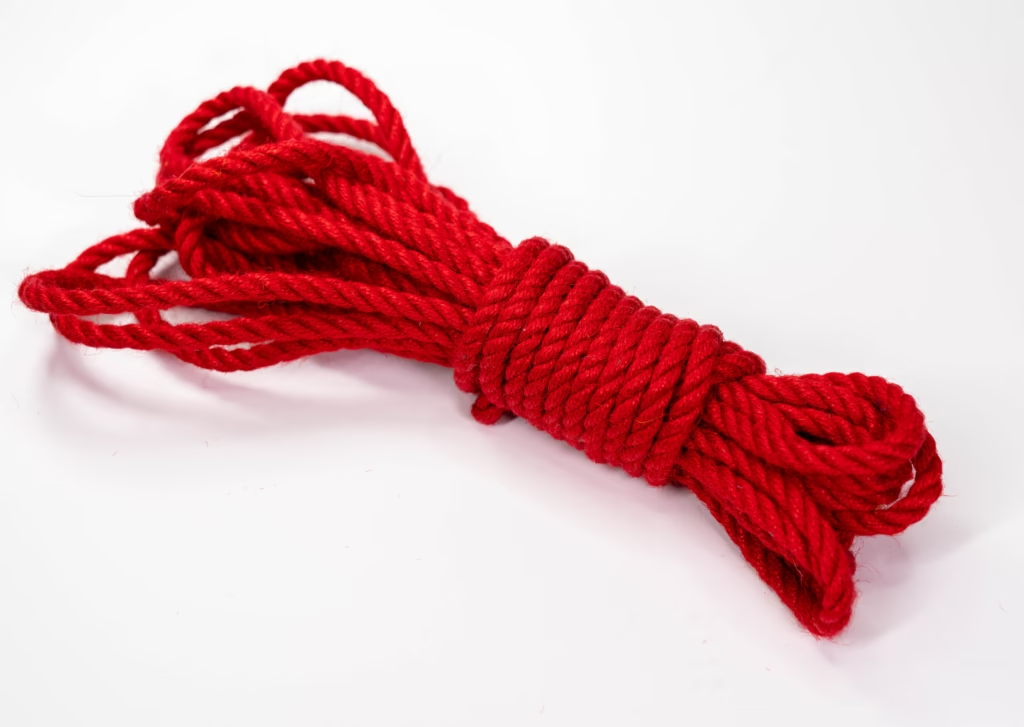The Allure and Symbolism of Japanese Blood Red Rope in Shibari
In the world of traditional Japanese rope bondage, known as Shibari or Kinbaku, every detail—from knot to fiber to color—holds profound meaning. Among the many visual and symbolic choices in this art form, blood red rope carries a particularly evocative and powerful presence.
The Significance of Color in Shibari
In Japanese culture, colors are deeply tied to symbolism. Red, in particular, holds a dual meaning: it represents life force, passion, and vitality, but also sacrifice, danger, and transformation. When applied to Shibari, red rope becomes more than a binding material—it becomes a statement.
Where natural jute or hemp ropes are earthy and grounded, red rope is visceral and emotional. It evokes the intensity of the connection between the rigger (the person tying) and the model (the one being tied), suggesting themes of love, power, surrender, and sensuality. The color red can heighten the psychological and aesthetic impact of a scene, drawing the eye and deepening the emotional context.

Craftsmanship Behind Blood Red Rope
Authentic Japanese bondage rope is traditionally made from natural fibers like jute or hemp. To achieve a rich, blood-red hue, artisans carefully dye the ropes using high-quality, non-toxic dyes. The process involves boiling and soaking the rope multiple times to ensure the color penetrates deeply and evenly without compromising the rope’s strength or texture.
After dyeing, the rope is often conditioned by hand—a meticulous process of burning off loose fibers, oiling, and softening the rope to achieve the perfect balance between grip and glide. The result is a supple, durable rope that both looks and feels luxurious.
Symbolism in Practice
Using blood red rope in a Shibari session can be deeply intentional. For some, it signifies a rite of passage, the crossing of a psychological threshold. For others, it might embody themes of dominance, desire, or catharsis. In performances, red rope enhances the visual drama, especially against bare skin or contrasting backdrops.
Red rope can also pay homage to the more theatrical aspects of Kinbaku’s history, where emotion and artistry were just as important as restraint. Pioneers of modern Shibari, such as Seiu Ito, infused their work with eroticism, pain, beauty, and metaphor—all elements perfectly complemented by the boldness of red.
A Modern Resurgence
As Shibari continues to gain popularity around the world, blood red rope has emerged as a favorite among practitioners and photographers alike. In the age of social media, its visual impact cannot be overstated—it captures attention instantly, sparking curiosity and admiration.
But beyond aesthetics, red rope invites a deeper exploration of intimacy and narrative. Each tie becomes a stroke of a larger story—a story of connection, emotion, and the beauty found in vulnerability.
Whether you’re a seasoned rigger, a curious newcomer, or simply an admirer of rope art, Japanese blood red rope offers a captivating blend of tradition, symbolism, and striking beauty. In the hands of a mindful practitioner, it becomes more than rope—it becomes poetry.